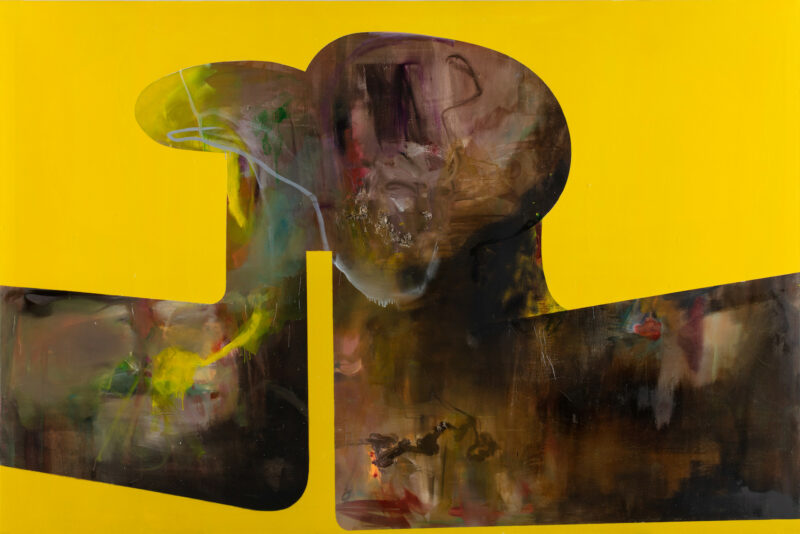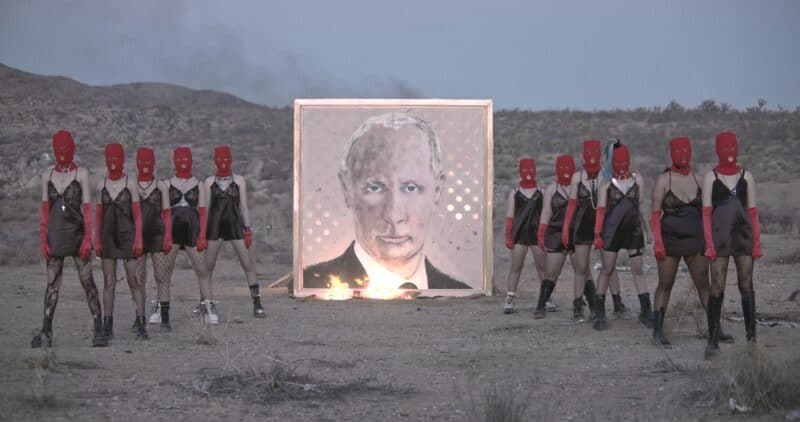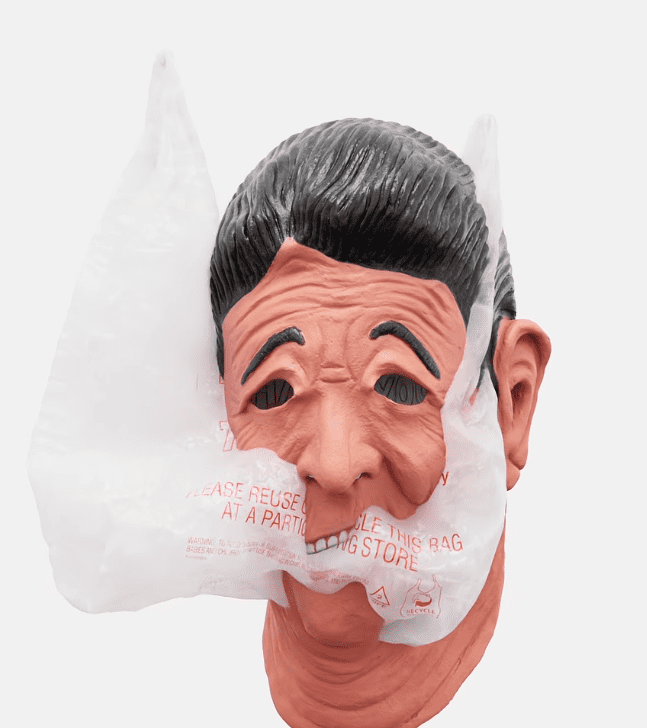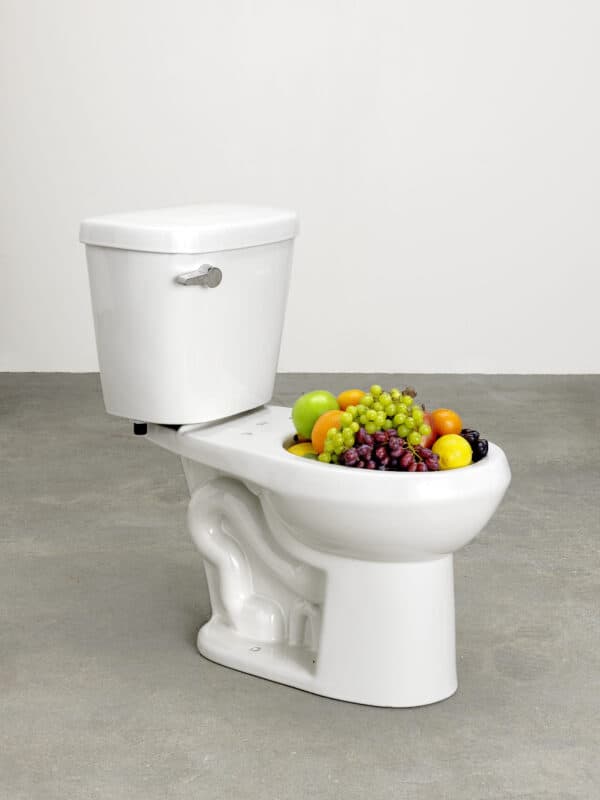
The immersive world of the polyhedric graffiti writer, visual artist, musician, lyricist, performer, fashion designer, innovator and philosopher Rammellzee lands is open now in Los Angeles. The exhibition surveys his oeuvre from his graffiti beginnings on the A train in the mid-1970s to his fine arts and performance practice developed over the following three decades.

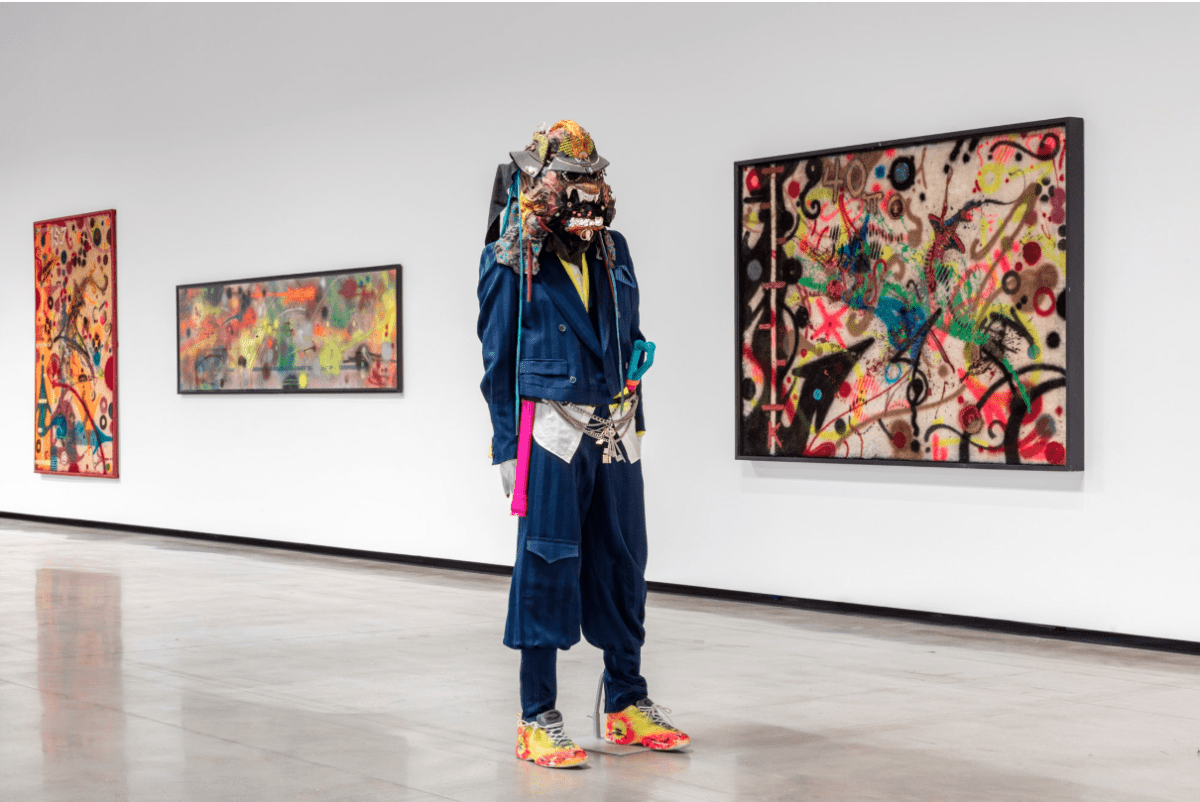
A true iconoclast, Rammellzee committed to his thinking and art-making with an approach that was simultaneously programmatic and shamanic. His esoteric manifestos encompassed philology and astrophysics and drew inspiration from contemporary sensibility and medieval history alike. One of Rammellzee’s obsessions was a story about medieval monks who developed lettering so ornate to be deemed unreadable by the higher ranks of the clergy and eventually got banned. In his vision, this story was proof of the subversive, anti-establishment potential of lettering. It illuminated the path similarly undertaken by graffiti artists, who by rendering a name mysterious and unrecognizable, could liberate language from its intrinsic power structures. This was the birth of Rammellzee’s philosophy, “Gothic Futurism,” and the artistic approach known as “Ikonoklast Panzerism.”
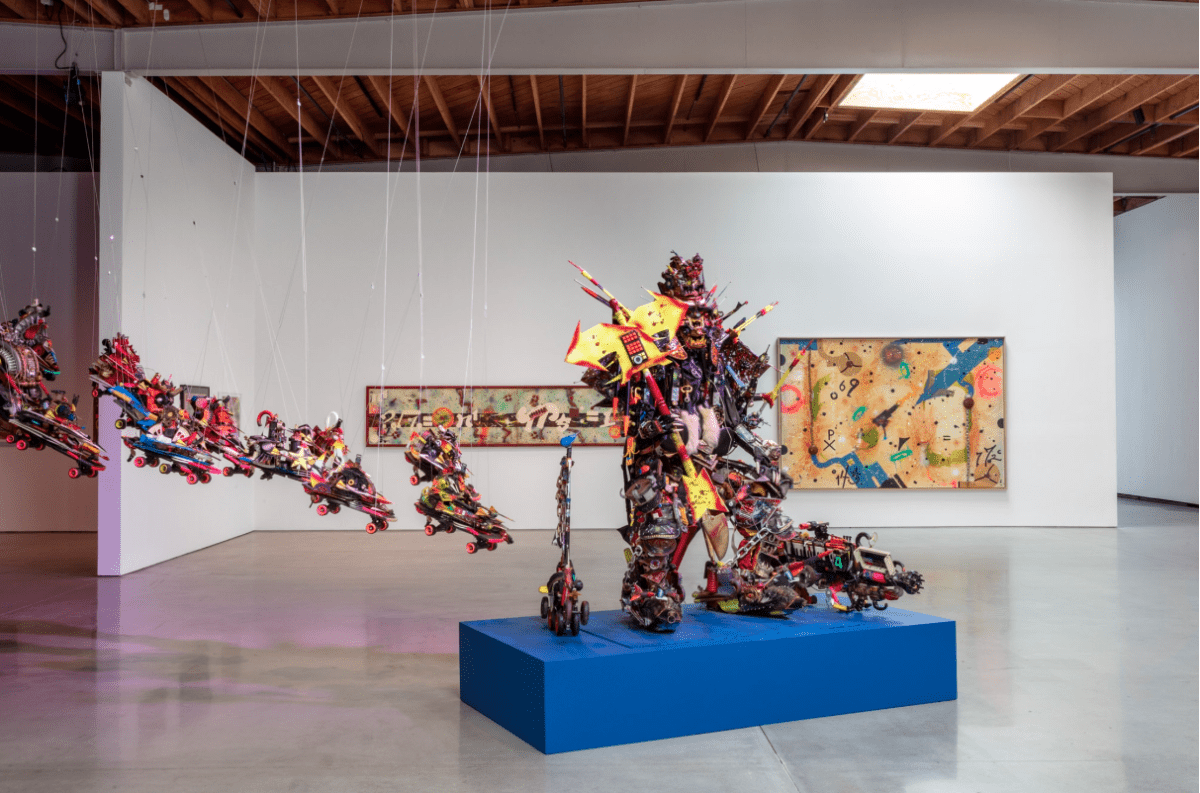
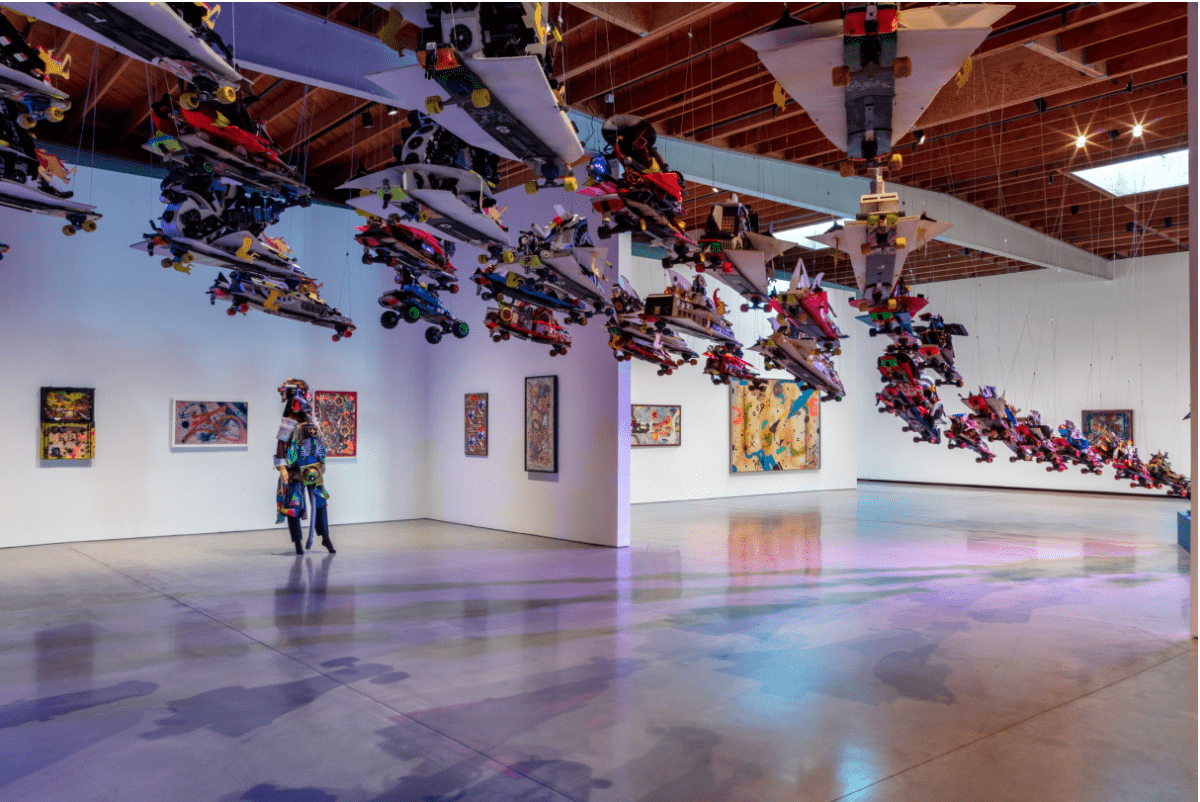

The weaponized letters of the alphabet were, for Rammellzee, the inspiration for a fleet of spacecrafts for letter racing and galactic battles in a postapocalyptic sci-fi fantasy. Quintessentially DIY and yet futuristic, the sculptural sets of the Letter Racers are on view at the gallery. They exemplify one of the aspects at the core of Rammellzee’s method: playing with metaphysical concepts in the physical world.
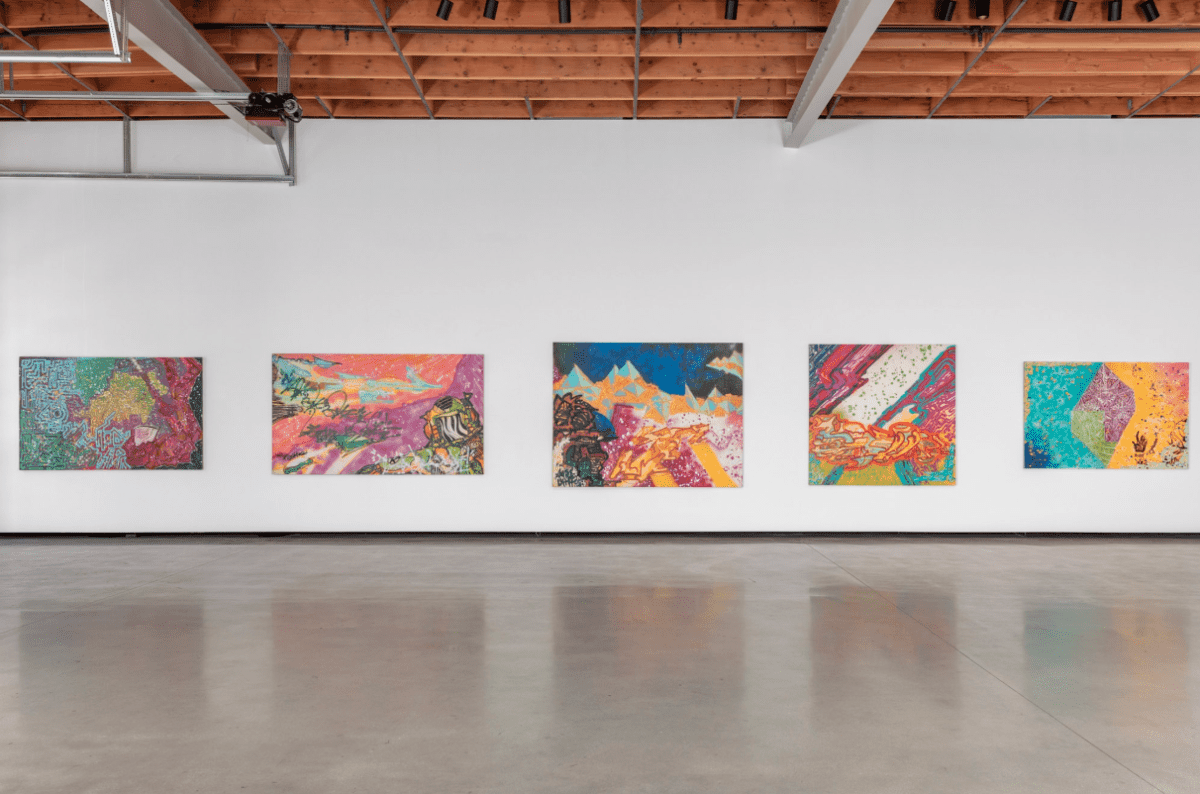
Part of a generation that grew up during New York City’s infamous financial and infrastructure crisis, Rammellzee captured the decaying and lawless reality of the streets of Manhattan in thick layers of epoxy resin. Repurposed objects and trash became inventive tools to assemble and create not only his Letter Racers but also several constructed sculptures, painterly assemblages and garments for his performances. By the early 1990s, Rammellzee had originated an Olympus of characters and alter egos made real through costumes, paintings and constructed sculptures. He would embody the Garbage Gods in their full-body suits of armor, some of which weighed more than a hundred pounds. The most paramount character, The Gasholeer, was even outfitted with a flamethrower.
Rammellzee was the embodiment of his art and theories. At times contradictory and polarizing, he could enrage and amuse at the same time. The magnetism of his inscrutable theoretical monologues can be perceived to this date.
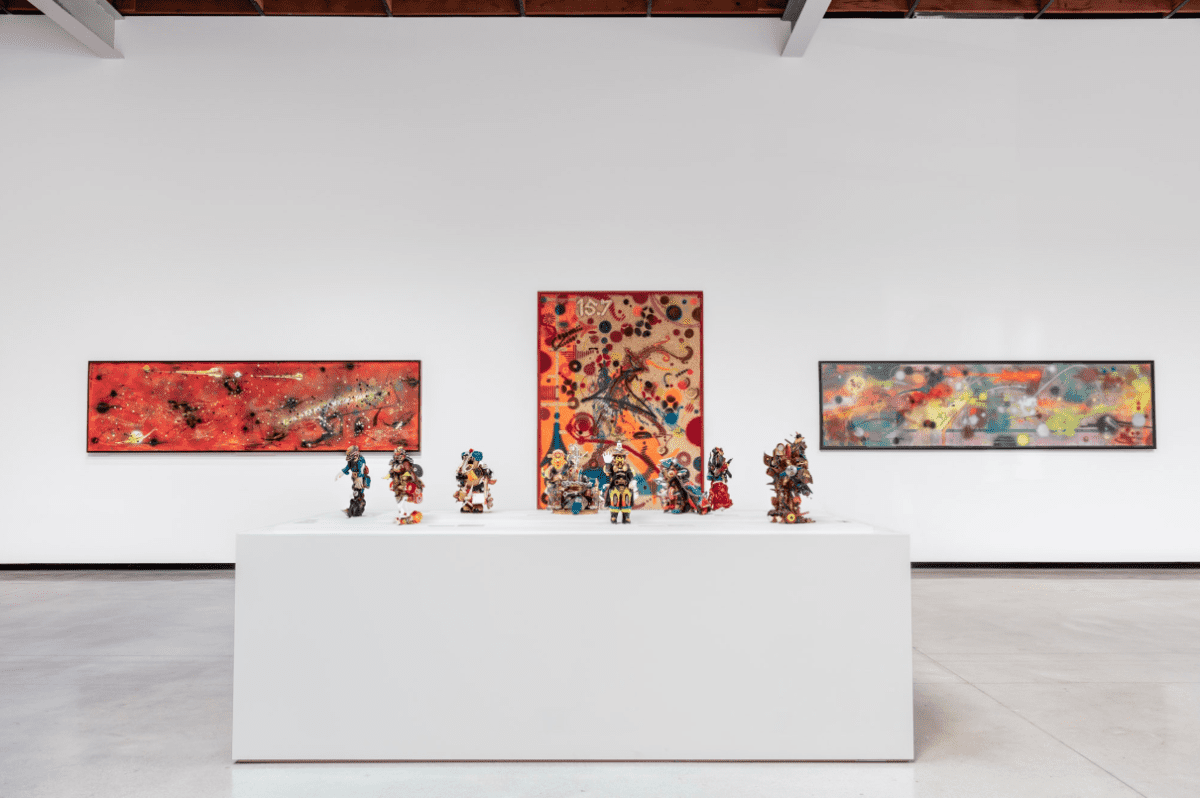
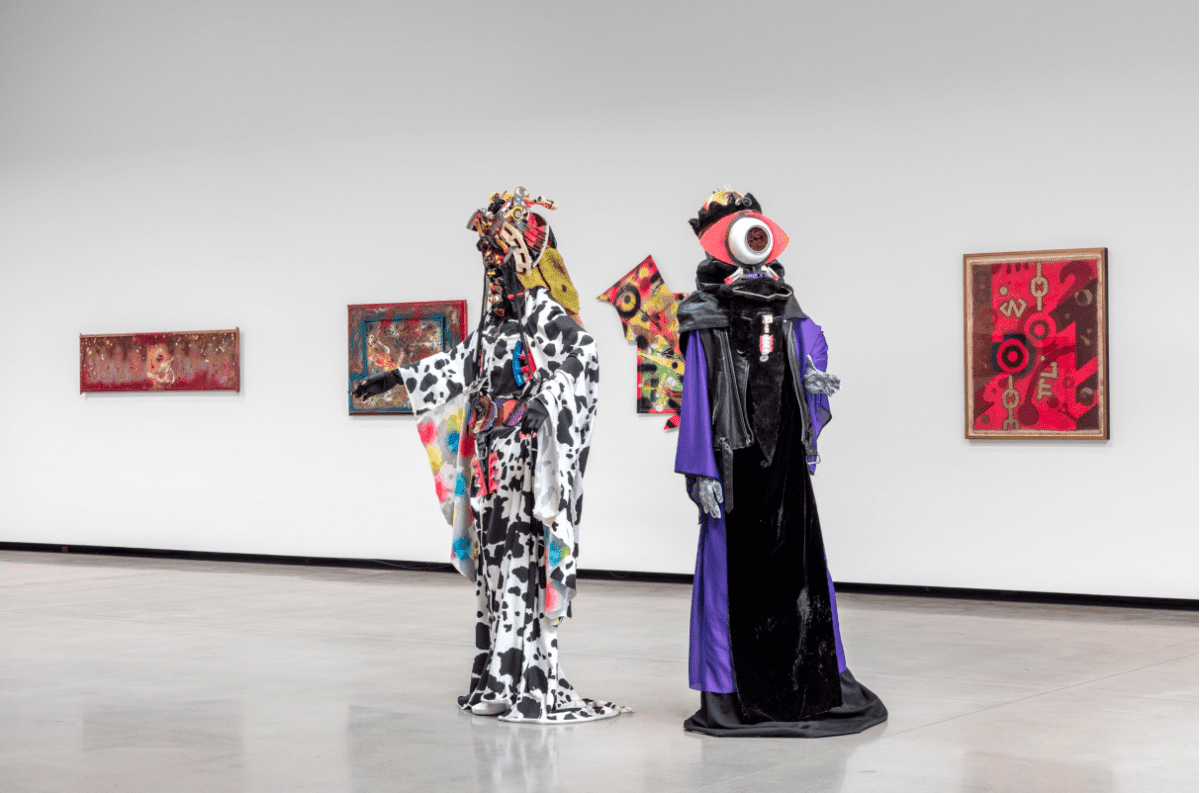
The critic Carlo McCormick poignantly remarked in an Artforum review from 1987:
Rammellzee’s art incorporates so much scientific, military, and linguistic information that it is hard not to dismiss his confusing techno-poetry as self-indulgent babble. Conversely, however, Rammellzee’s innate sense of lyricism gives his mannered, mathematical prose a quality that draws one in, and the seamlessness of his conceptual invention leads one to wonder whether the meaning is indeed decipherable and whether perhaps it is only our ignorance that makes it sound like gibberish.
Rammellzee: Gothic Futurism –January 14th, 2023, Jeffrey Deitch 925 N. Orange Drive, Los Angeles
Curatorial coordination: Viola Angiolini, Director of Research and Curatorial Projects Curatorial advisors: Kool Koor, Max Wolf
About the artist
Rammellzee was born in Far Rockaway, Queens, in 1960 to parents of Italian and African American descent. In 1979, at nineteen, he legally changed his name to the equation RAMM:ELL:ZEE. Since the 1980s, his work has been exhibited in galleries and museums and supported by international collectors. As a musician, Rammellzee invented a nasal rap style known as “gangsta duck,” influential to artists such as the Beastie Boys and Cypress Hill. He appeared in Charlie Ahearn’s iconic film Wild Style (1982), and his 1983 song “Beat Bop”—produced and with a cover design by Jean-Michel Basquiat—was featured prominently in Henry Chalfant and Tony Silver’s documentary Style Wars (1983). In the early 2000s, Rammellzee’s Garbage Gods and his fleets of Letter Racers settled in his TriBeCa loft, known as the “Battle Station,” which he barely left towards the end of his life. Rammellzee died in 2010 at the age of forty-nine. His birth name remains a mystery even to some of his closest friends.
In 1979, Rammellzee met the graffiti artist A-One at an evening class at FIT. A-One introduced him to the “Mitchell Crew,” the group of graffiti artists with whom he painted walls and trains. The crew was named after the housing project in the South Bronx where the members lived at the time: A-One on the eighth floor, Kool Koor on the second floor, and Toxic across the street. The connection with Rammellzee was immediate and these artists joined him to become part of TMK (Tag Master Killers), the graffiti crew he founded. “TMK was about defending the letter,” says artist Kool Koor. To become a member of TMK, artists had to prove their talent by executing a letter of the alphabet based on Rammellzee’s Ikonoklast Panzerism. Each artist responded to the task of arming the letter in their personal style: Toxic’s was more abstract, A-One’s figurative, and Kool Koor’s architectural. Gothic Futurism at Jeffrey Deitch features a gallery curated by the artist Kool Koor documenting the work of TMK and the individual universe of each artist.
Jeffrey Deitch met Rammellzee in 1980 and maintained a dialogue with him for many years. He was with Rammellzee and Jean-Michel Basquiat in Los Angeles in 1983 when Basquiat painted his iconic work Hollywood Africans featuring a self-portrait and portraits of the artist Toxic and Rammellzee. Deitch and Rammellzee spent several years planning a gallery exhibition, but the project was never realized. After the artist’s death, Deitch recreated the “Battle Station” in collaboration with the artist’s wife Carmela in his 2011 Art in the Streets exhibition at the Museum of Contemporary Art, Los Angeles. Gothic Futurism is Jeffrey Deitch’s first gallery exhibition in partnership with the Estate of Rammellzee.

